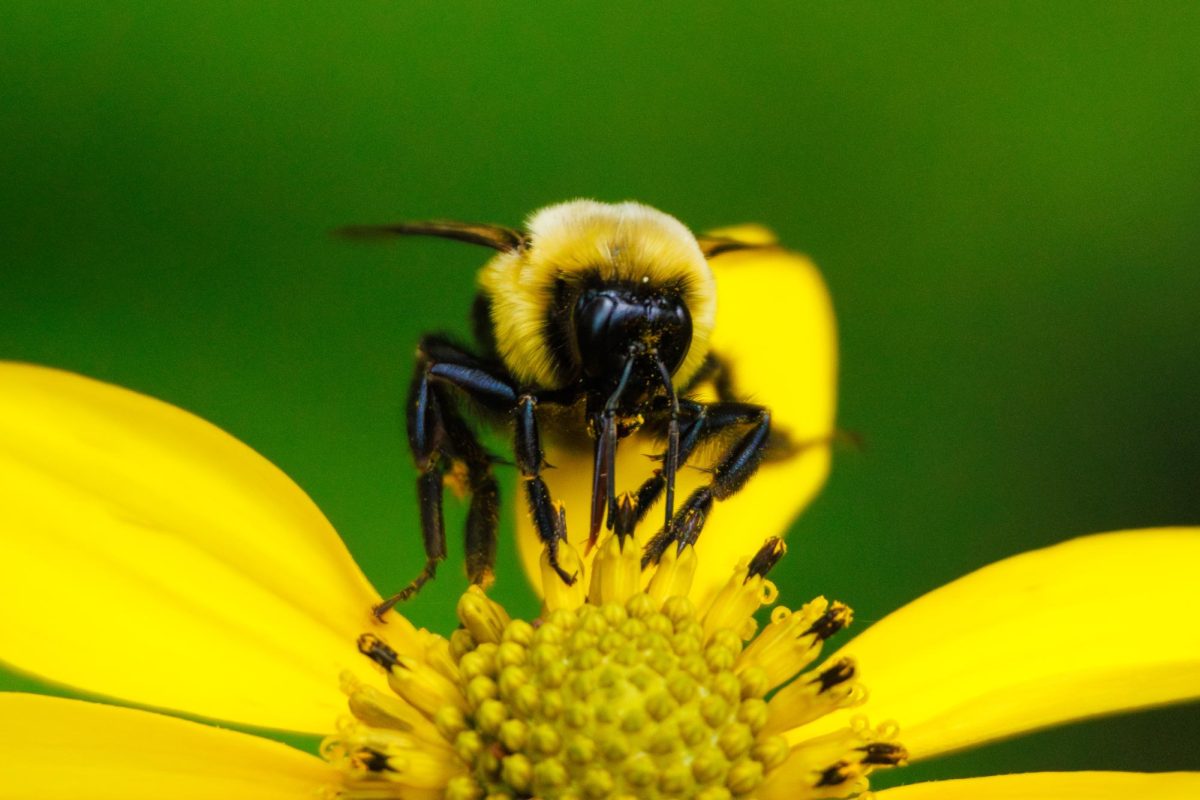Bees have been crucial to the agricultural practices in the world, pollinating a third of food. However, bees have been increasingly dying due to pesticides and viruses.
Researchers Adam Dolezal, associate professor in LAS, and Edward Hsieh, a graduate student studying Entomology, have found a possible solution to ensure bees’ resilience and survival in their natural habitat: good-quality nutrition.
The study originated at the crops of Iowa State University, where Hsieh and Dolezal studied the relationship and effects between bees and prairie strips.
According to Dolezal, scientists have discovered three factors that contribute to the decline of bees’ health.
“One is pathogens — a lot of viral diseases or parasites — exposure to pesticides and then the lack of good nutrition in their landscape,” Dolezal said.
Get The Daily Illini in your inbox!
Although viruses, nutrition stress and pesticides are known to decimate bee populations, very few studies have looked at how all three variables affect bees, making this study among the first to explore this, Hsieh said.
To formulate this study, Hsieh designed seven experiments with different diets, including artificial or natural pollen, agricultural pesticides and the Israeli Acute Paralysis Virus — known to destroy bee populations.
“We would feed them (various) diets, and then we would mix the insecticides, the pesticides, into the diet mixtures,” Hsieh said. “Then we would also inoculate the cages with the virus solution.”
After seven days of observation, Hsieh measured the mortality of the bees and repeated the process with different experimental conditions.
Many bees died when fed artificial pollen and exposed to the virus; however, when bees were fed natural pollen — a higher quality diet — and exposed to pesticides, the survival rate for bees increased, according to Dolezal.
“If you give (bees) extra good nutrition, they now probably have the nutritional resources for their body to fight back, and now they actually survive better,” Dolezal said.
The study also reported signs of bees showing resilience against pesticides.
According to Dolezal, it was expected that bees would die more from pesticides than the virus infection. With poor nutrition, bees experienced a higher mortality rate when exposed to pesticides.
However, when feeding and exposing bees to quality nutrition and pesticides, they survived better than the bees who had quality nutrition and no pesticides, Dolezal said.
“This is actually a phenomenon that has been observed in other insects, mostly crop pests, and it’s through this process called hormesis, which is where it’s kind of like, ‘What doesn’t kill you makes you stronger,’” Dolezal said.
The study also answered Hsieh and Dolezal’s question on whether or not it was worth it for bees to live among prairie strips despite the pesticides they might be exposed to.
Prairie strips are a conservation practice that preserves soil and water while providing wildlife habitat to pollinators and other organisms. The narrow strips of land exist between crops.
There are over 22,000 acres of prairie strips in 15 states, which protect around 220,000 acres of cropland.
Hsieh explained one of the major concerns about prairie strips is that they can act as an ecological trap due to pesticide drift — the movement of pesticides to other unintended areas — contaminating an otherwise quality habitat.
“You could put in a bunch of flowers, bees come to those flowers and then you’re applying pesticides right next to them, but then it kills all those bees,” Dolezal said. “Even though you created a good habitat, it’s actually bad for the animals that you’re trying to help.”
Despite the issues, Hsieh believes their experiment shows the nutritional benefits of prairie strips, which can aid bees in their survivability.
“They have to pay a small price for being in these strips by being exposed to these pesticides, but it’s probably worth it overall,” Hsieh said.
Matthew O’Neal, professor at Iowa State University in the Department of Plant Pathology, Entomology and Microbiology, describes prairie strips as a refuge for bees amid their stressors.
“Being a bee is hard in a landscape, but if you’ve got a refuge and a good diet in that prairie strip, then it looks like you’ve got a better chance of surviving and thriving,” O’Neal said.
O’Neal explains Hsieh and Dolezal’s work is significant because it can encourage landowners to establish prairie strips regardless of pesticide concerns.
“Hopefully, it gives (landowners) the confidence to know that if they establish a prairie strip like this, they can continue to farm thoughtfully adjacent to it, but that’s not going to put at risk the conservation benefits that are derived from this habitat,” O’Neal said.
Although Dolezal notes people should spray pesticides with caution, he believes that these agricultural practices can exist alongside conversational landscapes like prairie strips.
“That isn’t to say that we should spray pesticides wherever and not care at all,” Dolezal said. “(This study) shows that normal agricultural practices can be compatible with conservation landscape. They don’t have to be at odds. We can find ways to have them coexist right next to each other without having to completely ban pesticides or completely isolate the habitat.”






